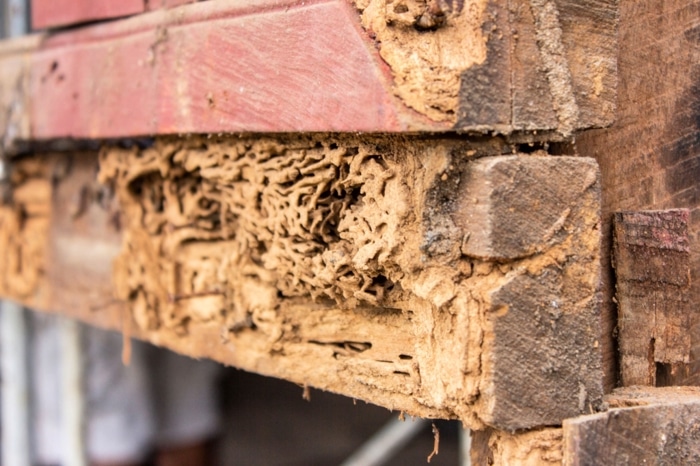Keeping an HVAC system running smoothly isn’t some far-off goal—it’s an ongoing effort that calls for smart maintenance. Property managers who oversee heat pumps, furnaces, and central AC units across multiple properties often find that attention to detail beats frantic fixes any day. That’s the energy this guide brings: practical advice you can use now, delivered in a casual-yet-professional tone.
Know Your Equipment Like Your Back Pocket
Get familiar with every HVAC system in the portfolio—age, make, model, fuel type, how it functions. Don’t wait until a seasonal audit—it should be baseline knowledge from day one. Emergency calls have revealed issues as simple as thermostats set in Fahrenheit when the system needed Celsius. That kind of oversight can lead to frozen coils and costly weekend repair bills. Understand the temperaments of each unit: which needs more frequent filter changes, which is prone to refrigerant leaks, which HVAC brand tolerates what kind of weather swings.
This knowledge reduces guesswork. Abnormalities are spotted faster. Breakdowns are prevented. Embarrassing resident complaints are avoided because it’s easy to explain why a system kicked out early and when a fix is scheduled.
HVAC Routines That Stick (Then Scale)
Performing HVAC checkups doesn’t need to be fancy: keep it consistent. Start with monthly visits during peak seasons—winter and summer—when systems work hardest. Air filters are the MVP in this routine. Don’t just look at them—check airflow, check pressure drop, check frame integrity. Replace the filter before it chokes airflow; doing this can extend system life by up to 15%.
Every quarter, schedule a deeper review: thermostat calibration, electrical connections, belt tension, blowers and motors, safety switches, refrigerant levels. A simple log should be kept—date, inspector, what was reviewed, issues found, what was fixed. Over time, trends emerge. For example, if one unit starts calling for more refrigerant every spring, it might be time to hunt for a small leak. Skip this, and the wait continues until the compressor burns out.
Hygienic Habits That Keep Coils Squeaky
Dirty evaporator or condenser coils are silent killers: they lower efficiency, raise stress on compressors, and drive up energy costs. Property managers may hear about this once, but seeing it firsthand makes it real. Coils can be found caked in pollen at spring start, forcing fans to work overtime.
Every spring before AC season kicks in, treat coils with a gentle coil cleaner—but avoid aggressive sprays. Too strong a spray can damage aluminum fins. Let the cleaner dwell for five minutes, rinse softly, and let air-dry before restarting. Do the same in fall for heat pump or furnace coils. This simple task saves hundreds in energy bills—and avoids mid-July emergency calls when the AC can’t handle humidity and clog.
Drain Lines, Not Downtime
Condensate drainage may sound minor—until it spews water inside closets or floods basements. It’s a sneaky troublemaker. In some cases, drain lines have been found pinched behind fresh drywall panels—new renovations, same old water leak hazards.
Inspect drain trays and PVC pipes quarterly. Run a gallon of vinegar solution through the trap—no bleach, no visits from mold. Let vinegar sit for 10 minutes, then flush with water. Ensure piping slopes downward with no dips or obstructions. If a float switch is included, test it—pour a cup of water into the drain pan and ensure it shuts the system off. If it fails, water ends up where it shouldn’t.
Ductwork Doesn’t Get Recognition, But It Should
The unsung hero—and surprise saboteur—of efficient HVAC is sealed ducts. A small tear sends conditioned air into unconditioned cavities, increasing run-time and discomfort. Even new units can’t make up for leaky ducts. In one case, a moldy smell behind a wall turned out to be from a cut in the main return trunk, pulling humid air behind drywall.
Annually inspect exposed ductwork. Feel for air leaks and rattles. Seal gaps and joints with mastic—not tape that peels off in months. Inspect fiberglass-insulated ducts for deteriorating vapor barriers, and apply tape patches or clamped mastic patches when needed. This improves airflow and system longevity—and protects residents by keeping air where it belongs.
Thermostat Checks Mean Broad Impact
A faulty thermostat can throw the entire system off. What looks like a unit problem may actually be a misreading thermostat. Schedule thermostat checks every six months. Dust the contacts, level check readings, swap in a known-good unit if it’s outdated—heat pumps especially don’t function well with old thermostats.
Invest in simple setback/programmable thermostats that residents can’t easily override. That means fewer conflicts (“It’s 80 degrees but told the unit to use heat”) and fewer calls. A small investment here prevents big energy waste.
Electrical Connections: Often Overlooked, Always Critical
Loose wires, worn terminals, failing capacitors—these are silent stress points in many systems. A loose connection might work today and weld itself with heat… until it fails tomorrow. Mid-season failures can sabotage comfort during extreme weather.
Open exterior disconnects twice a year. Inspect breakers, fuses, contactors, and relays. Look for darkened areas, a sizzling smell, or melted insulation. Replace aged capacitors proactively if they’re over five years old, especially in older systems. If there’s ever a burned plastic smell near motors, shut it down and bring in an electrician. Electrical safety is not optional—it’s essential.
Pay Attention to Refrigerant Pressure, Professionally
Low refrigerant not only reduces cooling but damages compressors over time. While fine-tuning refrigerant is a technician’s job, property managers should notice warning signs—long run cycles, frosting lines, inability to hold temperature.
When these symptoms appear, don’t delay. Call the HVAC partner. Ask for pressure checks, electronic leak detection, and level correction per manufacturer specs. Record the findings. If the same unit leaks again and again, it’s time to replace that portion rather than rely on temporary fixes.
Seasonal Transitions: Smart Prep is Non-Negotiable
Before winter, reverse the spring coil-care routine: clean heating coils, confirm oil ports on motors (if applicable), reverse blowers on heat pumps, and check gas valves or electric heaters. Test-run the furnace or heat pump by adjusting setpoints and listening for unusual sounds or cycle patterns.
When spring returns, start up the AC: remove covers, clean coils, inspect belts, vacuum blower housings, change filters, check thermostats, and run a final pressure/flow test. It takes a weekend for several units—but it prevents hundreds in emergency calls when the first heatwave or cold snap hits.
A Simple But Mighty Maintenance Log
Spreadsheets are helpful, but a shared document tied to dates, unit ID, what was done, and who did it works wonders. Track filter replacement dates, coil cleans, electrical notes, drain checks, and any issues. This log pays for itself. During budgeting season, referencing that “filters were replaced 48 times across the portfolio and 15 system calls were avoided” brings clarity and earns budget buy-in and maintenance team respect.
Know When to Replace, Don’t Just Repair
Not every breakdown calls for replacement—and not every old system deserves to stick around. If a 15-year-old unit needs major repairs, it’s often smarter to budget for replacement. New high-efficiency systems not only run better but qualify for rebates, reduce energy costs, and cut future service calls.
Track age and repair history in the log. When repair costs approach 50% of replacement cost, it’s a clear signal. Proactive upgrades reduce stress and save money over time.
HVAC preventive care isn’t rocket science—it’s habit, follow-through, and accountability. Do the basics: know the systems, follow a schedule, keep surfaces clean, pay attention to leaks and wiring, maintain logs, and replace when needed. The payoff? Systems that run longer, run cheaper, and avoid emergency outages—freeing property managers to focus on the bigger picture.






